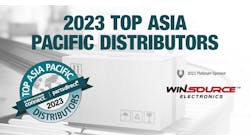The role of strategic buyers has evolved over the years. In the past, electronics purchasers needed to make sure their companies partnered with key suppliers that developed new technologies, built parts with Six Sigma-level quality, and delivered them on time at the lowest possible cost.
Buyers’ roles further evolved as original equipment manufacturers (OEMs) decided to outsource manufacturing to reduce costs and to enter new markets for their products. Purchasers involved in outsourcing decisions now have to make sure that their company’s electronics manufacturing services (EMS) providers have the necessary manufacturing technologies and capabilities to build products in different regions of the world. Purchasers also need to make sure that the EMS providers chosen have robust supply chains to support global manufacturing operations.
Today’s demands on purchasing are even more complex, especially as the worldwide regulatory environment continues to place new demands on suppliers of electronic components and systems. Buyers now must make sure that their suppliers are able to comply with a growing list of government regulations concerning the environment, social responsibility, export of products, and counterfeit parts.
Though government regulation is not new to business in general, the number of regulations that concern the electronics industry has proliferated over the past 10 years. As a result, buyers need to select suppliers that are aware of regulations and are willing to comply with them. Often, buyers need to work with suppliers to provide compliance documentation.
Some in the electronics supply chain point to the European Union's Restriction of Hazardous Substances (RoHS) and Waste Electrical and Electronic Equipment Directive (WEEE) as the beginning of a new wave of regulations that began 13 years ago. RoHS restricts the use of lead, cadmium, mercury, hexavalent chromium, polybrominated biphenyls and polybrominated diphenyl ether in electronics equipment. WEEE requires old equipment to be recovered and recycled.
Other countries, and some U.S. states, also passed similar environmental laws that affected the electronics industries.
Regulations concerning corporate social responsibility issues are proving to be challenging for the electronics industry and for purchasers. For instance, the much talked about Dodd-Frank Wall Street Reform and Consumer Protection Act requires publicly traded companies to declare whether any of their products contain conflict minerals such as tantalum and gold taken from illegal mines in Africa.
In recent years, U.S. export regulations have prohibited certain restricted technology products from being exported to countries such as North Korea, Iran, and Cuba. The idea is to prevent such products from being used in weapons systems of enemy countries.
Although many of the regulations have merit, some of them are a challenge to manage, implement, and comply with. Conflict minerals is one example. Section 1502 of Dodd-Frank requires companies to declare whether products have any tin, tungsten, tantalum, or gold mined from the Democratic Republic of Congo or nearby countries. Rebels in those countries have used the proceeds of illegal mines to finance war efforts for years.
Leslie Hamby, a legal specialist for EMS provider Kimball Electronics, said there is still much uncertainty about how to comply with the law.
“Compliance with this regulation is challenging," he said. “The human rights aspect of it requires that we all do our best to comply with it and thereby conduct the necessary due diligence. However, the level of traceability required—from product to mineral source—requires a certain level of dedication and devotion of human and financial resources that not all companies have at their disposal.”
Conflict minerals isn't the only regulatory challenge that buyers will face in 2015 and beyond. Although RoHS went into effect in 2006, the law has changed and now applies to more types of electronic products. For instance, in 2014 RoHS was extended to medical equipment and monitoring and control devices. In 2016, invitro diagnostic medical devices and industrial monitoring and control instruments will fall under its purview.
The number of regulations covering the electronics industry is likely to grow over the next five years, and more electronics OEMs will need the assistance and cooperation of their suppliers to be compliant with the new laws and rules.
Buyers involved with supplier selection and rating supplier performance will likely factor a supplier’s ability to comply with these issues into their supplier performance scorecards. Suppliers that fail to show compliance may lose future business.







